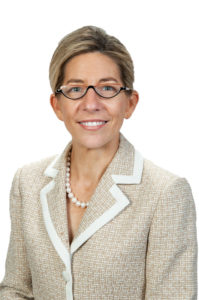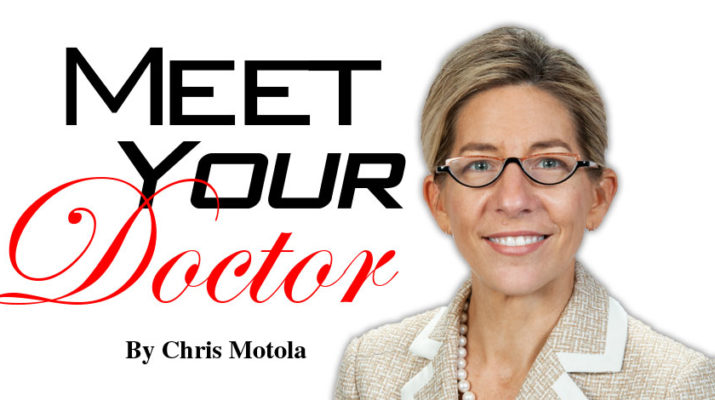Virtual help: Primary care leader talks about how Rochester Regional Health is helping patients who think they may have the coronavirus get medical consultation without leaving their homes
By Chris Motola

Q: It seems like an understatement to say we’re in an unprecedented moment when it comes to stress on our modern healthcare system. How are groups like Rochester Regional Health handling it?
A: Obviously our biggest focus is on how do we keep our patients safe and our healthcare workers healthy. The work we’ve been doing is around insuring patients understand good prevention: covering your cough, washing your hands with soap and water, sanitizing your hands, making sure you practice social distancing. We’re doing a lot of education with patients. We’re doing a lot of education with our practices around triaging our patients. So patients who are potentially sick with a fever and a cough and maybe has the flu or COVID-19, if we can take care of that at home through either telephone visits or telemedicine through our Care Now program, we’re doing that. If they do need to come into the office, we’re making sure both they and their provider are getting the appropriate masking to prevent droplet spread of the virus, whether it be flu or COVID.
Q: For most people who end up infected with COVID-19, do they necessarily need a lot of medical intervention?
A: So the interesting thing about the COVID-19 virus is that most people, around 80%, who come into contact with it will have relatively mild symptoms. It’s patients who are over 60, have co-morbid symptoms like COPD, lung disease, patients who are immune-compromised, which may be because of a cancer treatment, or because they’re pregnant. So those are the populations we’re most concerned about.
Q: So is it a matter of having those patients get seen and others to stay away from medical facilities if possible?
A: It’s more of a case-by-case basis. If someone has mild symptoms, we want them to stay home and use supportive therapy. So fluids, Tylenol, and staying in contact with their primary case provider in case symptoms do worsen, that way they can be appropriately triaged. It’s really about creating a relationship between the patient and primary care provider and having all the options available to them. We believe that video visits and the Care Now program are a very important asset in our toolkit for how to help keep some vulnerable populations at home. So those patients with chronic diseases, we don’t want to bring them out into crowded emergency rooms and urgent care waiting rooms if we don’t have to. We would rather triage them to home from home. We’re spending a lot of time on that and put a lot of policies into place from that perspective in order to be safe.
Q: What do patients need to be able to receive telemedicine on their end?
A: So for our patients, we’re telling them to call their primary care office and their primary care provider will make a determination for what the right kind of visit is for that patient. So it’s very individualized. They’re trained to be able to triage patients who are having problems and questions to the right mechanism of assessment, whether they want to do a telehealth visit or video visit through the Care Now program, or whether they want to bring them into the office if it’s safe to bring them into the office, or direct them to an urgent care office. Not every cough and fever is COVID. There are other illnesses that are treatable that we want to make sure we’re assessing for.
Q: What does a telemedicine visit look like? How do you do the things you’d do in a normal check-up from a distance?
A: A lot of it is conversation and history. So a patient calls in, if a provider decides a video visit is appropriate, they’ll be instructed on how to access a video visit on the Rochester Regional Health portal. Then you’re connected. It’s a very similar feel to [Apple’s] FaceTime, for those of you who have used FaceTime. The patient is then able to have a conversation with the provider, the provider is able to assess certain characteristics of the patient as far as how severe their illness may or may not be, how distressed they are and get a feel for the concerns patients are having. Video gives us more dynamic information than a phone call. Once it’s completed, there’s a record made, so it’ll show up if they need more care down the line in an emergency room, so the in-person provider will know what concerns were brought up and what was discussed and how things have maybe progressed. It’s a very nice way to ensure all care is integrated in our system and all patients have very good wrap-around care.
Q: For older patients who may not be as technologically proficient, does that introduce some issues?
A: Well, I’ll tell you, I have some patients as old as 87 who are doing just fine with it. I think FaceTime has done a lot to improve everyone’s skills, so we’re grateful to that. For other patients we have the ability to walk them through the process. A lot of our patients are already on the portal and are texting us, and we’re texting them back. We’re a big proponent of OpenNotes because we think it’s important for patients to be able to see what was in their visit, what their doctor was thinking and for older patients, that their caregivers have a proper understanding of what the patient needs. We are seeing older patients use the portal. Are virtual visits right for everyone? No, but we have multiple other ways of helping patients get seen even if they’re at risk for COVID.
Q: What kind of impact has telemedicine had on the current moment?
A: We’re seeing virtual visit numbers go up and up. We see that as a good thing because we believe that many of these patients can be managed through virtual care. It’s important that we use this to keep our facilities free for patients who need to be managed there.
Lifelines
Name: Bridgette A. Wiefling, M.D.
Position: Senior Vice President for Primary Care for Rochester Regional Health
Hometown: Butler, Pennsylvania
Education: University of Wisconsin, Madison
Affiliations: Rochester Regional Health
Organizations: American Academy of Physicians
Family: Husband, three children
Hobbies: Sailing

